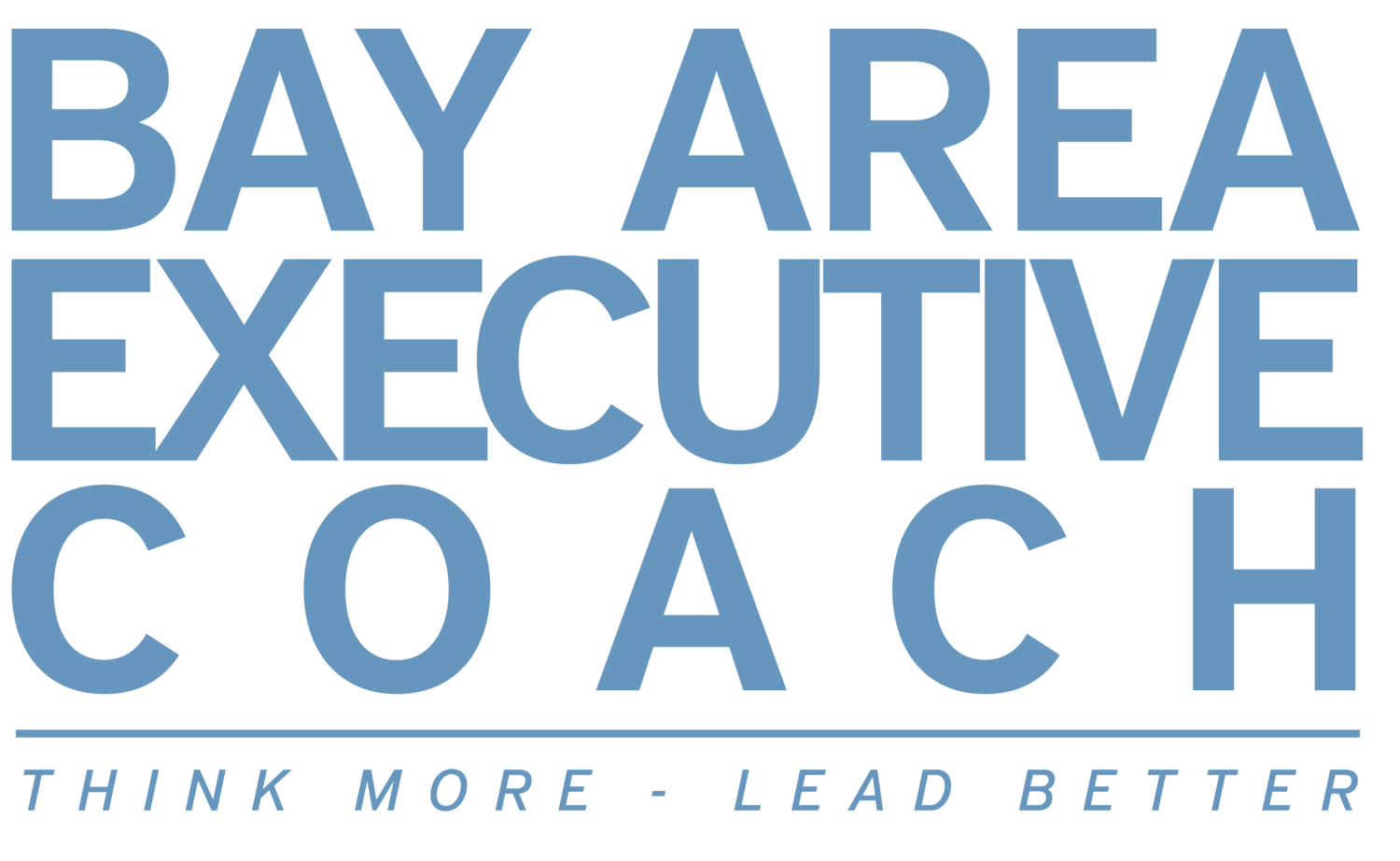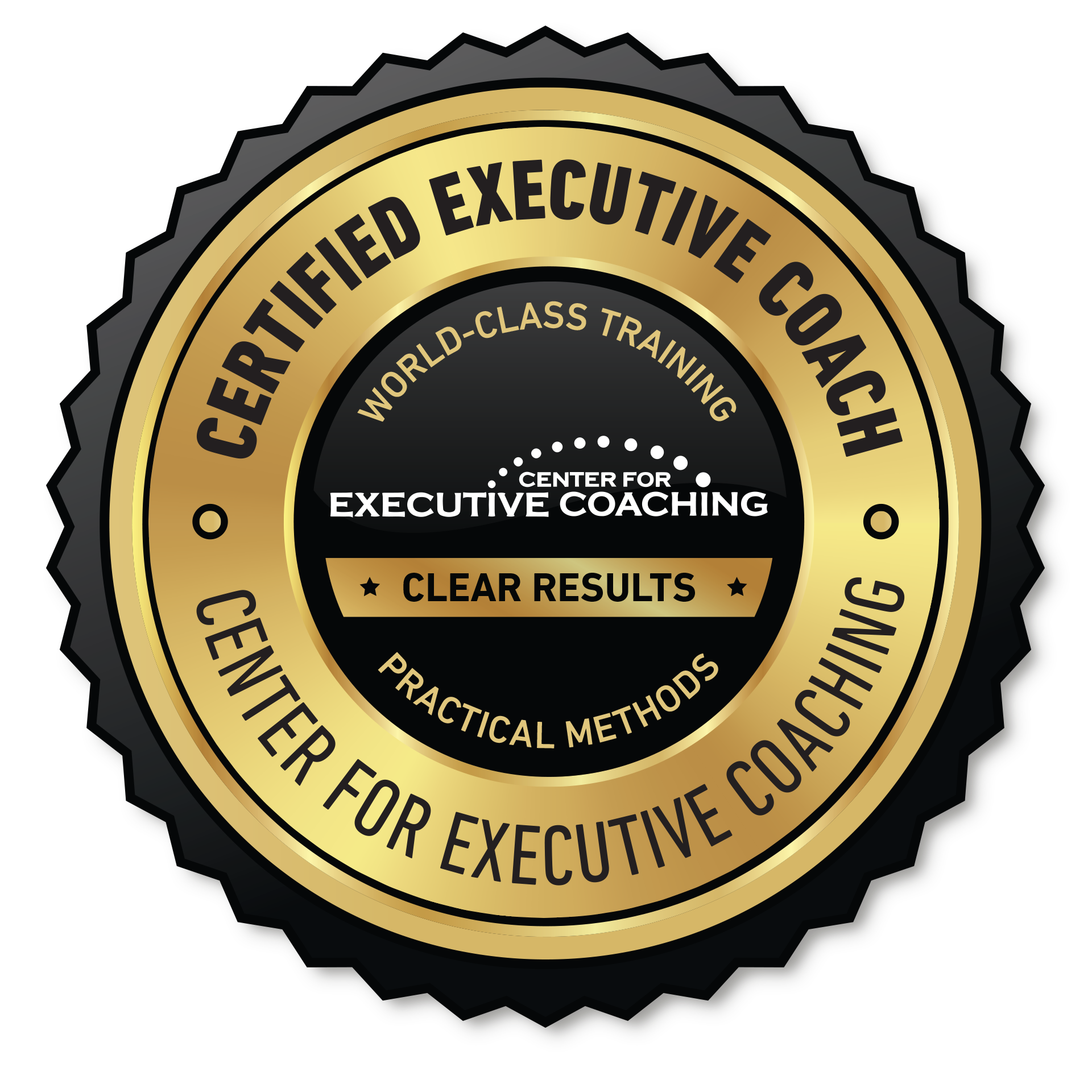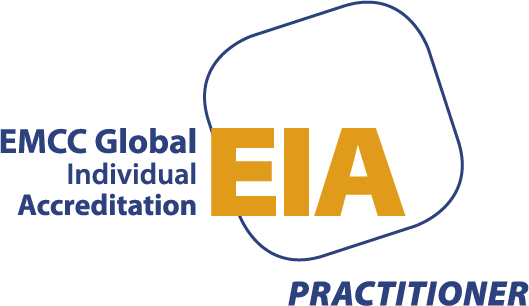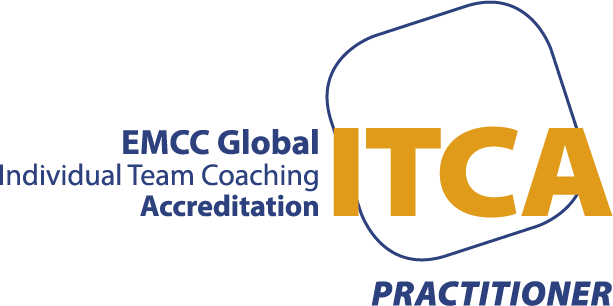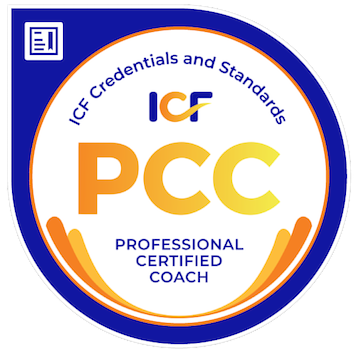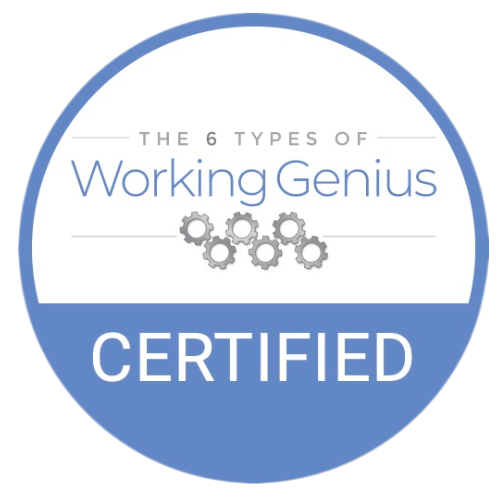- “Executive presence” refers to a combination of personality and character traits that make a leader believable, trusted, and respected by the people being led.
- Quiet confidence and emotionally intelligent leadership might best define the true nature of executive presence.
- Executive presence is characterized by a clear sense of emotional intelligence, effective communication, inspiring public speaking, acting with conviction and integrity, projection of quiet confidence, authenticity, careful listening, and looking the part.
- Like any leadership skill, executive presence can be learned and developed through study and effort. Start by developing an acute sense of self-awareness. From there, master your body language, cultivate your speaking skills, learn to work well under stress, become an excellent listener, maintain an appropriate appearance at work, have a vision and articulate it well, and work to continuously practice and refine your executive presence skills.
••••
Leaders are commonly judged by the results they achieve, often expressed in bottom-line results, profit margins, share price, and customer ratings. But these metrics neglect an intangible characteristic that all top leaders seem to possess and display, and that’s the curious quality of “executive presence.”
While sometimes shrouded in mystery or referred to in vague generalities, executive presence needn’t be mysterious at all. In fact, it’s a skill with clearly defined characteristics that can be studied and evaluated. More importantly, it’s a skill that can be learned and mastered by any leader or manager willing to make the effort. Let’s start our exploration of this topic by defining the term.
“Executive Presence” Defined
In its most basic terms, “executive presence” refers to a combination of personality and character traits that make a leader believable, trusted, and respected by the people being led. It’s the ability to inspire others to be effective in their roles through the consistent demonstration of clear leadership by the person in charge.
Executive presence is about a leader’s ability to inspire confidence in everyone around them. This leader inspires confidence in their team members by establishing themselves as someone to respect and follow. This leader also inspires trust among peers through their demonstrated competence and reliability. And, perhaps most importantly, a leader with executive presence garners appreciation among senior leaders, by establishing a track record of achieving superior results.
Undoubtedly, charisma plays some role in defining executive presence, but unlike a rock star or a politician, the leader with genuine executive presence doesn’t have to act flamboyant or ostentatious in their mannerisms or style. In fact, quiet confidence and emotionally intelligent leadership might better define the true nature of executive presence.
Why it Matters
Executive presence opens the door to new and better opportunities for leaders and the people they lead. While the exact nature of executive presence may not be clear, the need for it is. Many leaders are passed over for promotions because they just don’t have it.
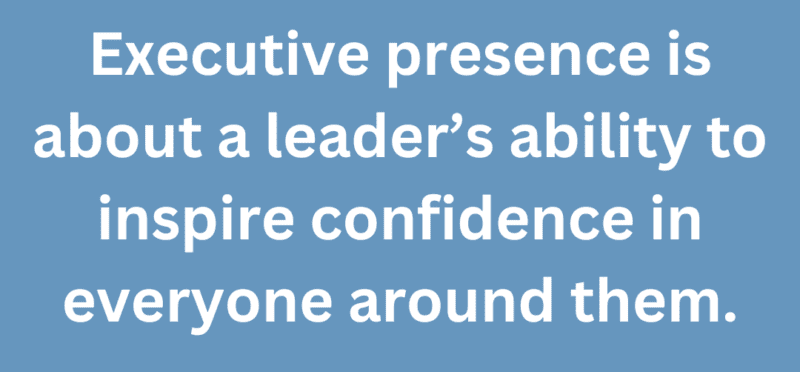
Besides the correlation with moving up, executive presence is critical during difficult times when leadership becomes more challenging. Teams look to their leaders for confidence, vision and resolve when things go south and those very same leaders must convey all of that and more to lead the team through to better times.
All this is to say, executive presence is not a “nice to have” but rather a “must have” in most organizations once you reach a certain level.
Characteristics of a Leader with Executive Presence
Here are some widely recognized characteristics of leaders with executive presence.
- They Exhibit a High Degree of Emotional Intelligence.
Emotional Intelligence is the ability to identify, understand, and assess not just your emotions, but those of others. Emotionally intelligent leaders are compassionate, self-aware, authentic, and intuitive. Leaders who display high emotional intelligence also tend to be effective and empathic communicators.
- They’re Effective and Inspiring Public Speakers.
Clear and compelling messages, delivered with an appropriate touch of humor and compassion, are essential to the individual who wants to come across as a leader. Command an audience and you’ll influence what they think and do. This is the arena in which executive presence and its force are on full display for others to see and feel.
- They Communicate Well on All Levels.
Leaders with executive presence aren’t simply good public speakers, they’re good communicators at all levels: in small groups, one on one, with clients, media and investors. They speak succinctly and know how to get their message across regardless of the circumstances or media.
- They Consistently Project Quiet Confidence.
Leaders with executive presence know they don’t have to be loud to lead. In fact, it’s to their advantage to be calm, rational, and almost humble at times, especially when facing a crisis or unusual challenge. A healthy balance of humility and confidence is essential to executive presence.
- They Act with Conviction and Integrity.
People trust leaders who do what they say they will do. They respect those who stand by their convictions and whose values cannot be shaken. Such leaders are consistent and deeply committed to doing the right thing for the right reason. Integrity is a personality trait universally admired. Many people are drawn to a leader with integrity. When they see integrity expressed by a leader, they follow that leader, hoping to be inspired into making their own better personal choices.

- They have a Signature Style.
Leaders with executive presence have a style that’s entirely their own. They don’t imitate or mimic other great leaders. It could be their mannerisms, the passionate way they talk about their beliefs, or the intriguing ways they communicate important messages. No matter what it is, there’s something utterly unique that sets them apart. Think of Steve Jobs when it comes to a leader who possessed a signature style that projected passion, confidence, and conviction. Warren Buffet and Satya Nadella are other examples of leaders with signature styles.
- They’re Authentic and Genuine.
People are drawn to those with executive presence because they’re genuine. When leaders are straightforward, comfortable in their skin, and honest about their flaws, they become more relatable and trustworthy. There’s something endearing and admirable about their willingness to make mistakes and admit to fears and uncertainties. It’s a humanization that other people readily embrace and appreciate.
- They Understand How Others Experience Them.
People with executive presence have a keen understanding of how they’re perceived by others. To gain this insight, they ask their mentors, and get feedback from colleagues, peers, and team members. It’s best when this feedback comes from a cross-section of people who see the leader act in a variety of situations. This understanding helps the leader continually work on their leadership effectiveness. Over time they become highly congruent with how they see themselves and how others see them.
- They’re Excellent Listeners.
One of the most important communication skills is the ability to listen. People with strong executive presence are exceptional listeners. They engage others with their full attention, they ask great questions, and they use listening as a way to explore important ideas. The ability to listen effectively also demonstrates self-confidence, another critical part of executive presence. Ironically, there are leaders who are tempted to listen less and speak more to prove themselves as they move up. This behavior works against building an aura of executive presence.
- They Possess Charisma.
Think of this as “style+” encompassing powerful communication skills, both verbal and nonverbal. Charismatic leaders command attention just by being themselves, a factor that gives them the ability to influence others. People naturally follow charismatic leaders without the need for pressure or coercion.
The Organizational Benefits Derived from Leaders with Executive Presence
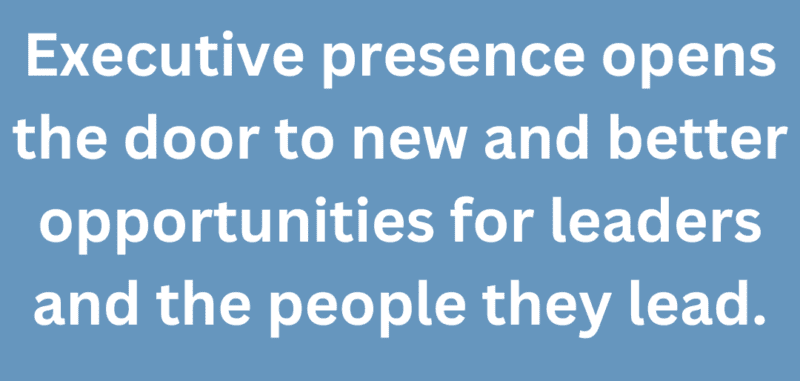
When a leader demonstrates ongoing executive presence, the results can be beneficial across the organization they lead. Here are some prime examples of why this is true:
- Improved Employee Morale.
When an executive team member possesses leadership presence, it often leads to better company morale. Energetic leadership helps employees feel more satisfied in their positions and increases confidence about the direction of the firm.
- Lower Turnover Rates.
Better employee morale leads to lower turnover rates. This can minimize the hiring and training costs that come with onboarding new employees, helping a company maximize its resources.
- Higher Productivity Rates.
When employees are more satisfied and feel respect from their leaders, they’re more likely to be productive. Higher productivity rates typically increase business success rates.
- An Aligned Organization.
When employees are feeling upbeat, have clarity about their role, and possess confidence in their leadership, the organization becomes aligned which can propel them past their competition.
How to Develop Executive Presence
Now that we’ve identified the main characteristics of executive presence, and listed reasons why it matters, let’s look at ways an aspiring leader can cultivate their own sense of executive presence. Like any skill set, it takes determination to learn and dedication to practice before it’s fully realized, but the short and the long-term rewards make this effort a rewarding one. So, here are some things to get started with right away.
- Start from the Inside Out
Executive presence isn’t just about how others perceive you. It starts with how you perceive yourself. If you don’t believe in yourself and your abilities, that self-doubt will be apparent, no matter what you look like or what clothes you’re wearing. Therefore, before you look outward, look inward.
Work on developing your self-confidence by challenging yourself to try new things, learn new skills, take on uncomfortable tasks you previously would shy away from. The more you push yourself outside of your comfort zone, the more your confidence will grow naturally.
- Become Acutely Self-Aware.
As we’ve discussed earlier in this article, executive presence involves understanding how others perceive you. Never neglect opportunities to increase your self-awareness. Get feedback from peers and team members, take professional assessments, work with a professional coach to enhance your abilities in this area. (And remember that it’s just as important to recognize and appreciate your assets as it is to identify your vulnerabilities.) With heightened self-awareness, a leader tunes into their strengths and can leverage them to the full advantage of all. Self-awareness is at the heart of executive presence.
- Master Body Language.
Body language can have a substantial impact on executive presence. In general, you want to ensure you’re relaxed, comfortable, and confident. While various cultures and organizations may have different norms, there are some general guidelines:
- Make eye contact: making eye contact is another part of effective executive presence. Eye contact can help you appear self-assured, and it can also help people feel that you are actively listening to them. Conversely, too little eye contact can make you appear disengaged, distracted or even dishonest.
- Mind your posture: if you have a habit of keeping your arms folded in front of you, your body language impedes people from connecting with you. It becomes a barrier between you and your audience. Instead, keep your arms at your side or use your hands and arms for gesturing. Also, work to maintain an upright posture to look more confident.
- Watch your facial expressions: leaders with executive presence have a calm demeanor and convey emotion through changes in facial expressions. When you speak with others, present a look of sincere interest. Smile and nod. When speaking to groups, look confident and smile. Avoid expressions that might convey impatience, judgment or dissatisfaction.
- Cultivate Your Network and Build Political Savvy.
People with exceptional executive presence understand companies are composed of complex relationships and that there’s likely to be some level of clashing egos and competing agendas. Organizational politics often arise when ambitious people work together.
People with strong executive presence are good at cultivating a network of relationships and developing the political savvy to steer challenging situations into a productive direction. The more people you know well across the company, the more likely you are to feel confident in your sense of the pulse of the organization and how to make wise decisions that will be supported.
- Learn to Operate Effectively Under Stress.
Do you get flustered or overwhelmed when the stakes are high? Do you lose your cool, or do you have a reputation for being temperamental? No one wants to see a leader who’s overwhelmed. People with good executive presence present themselves as calm, even-keeled, composed, well-prepared and in control at all times. If you need to work on this area, practice mindfulness and learn to detach your feelings from the situation and instead focus on the moment and what’s needed. Also, it’s helpful to get into the best possible physical shape and get plenty of good rest. You’ll be better able to handle stress when you’re fit and well-rested.
- Make Sure Your Appearance isn’t a Distraction.
Visual appearance makes a first impression, and first impressions, whether conscious or subconscious, are powerful. Therefore, you want to ensure your appearance inspires confidence and shows that you know how to look the part of a leader. Always make sure your appearance is appropriate for the setting and the company culture, and that it’s consistent with others at the level you aspire to reach. Pay attention to your clothing choices and grooming whether you’re in person or on video. Be willing to work with an image consultant if you’re not sure of how best to navigate this aspect of executive presence. It can make a difference.
- Have a Vision, and Articulate it Well.
Executives with presence almost universally have a compelling vision – a well-conceived mental picture of what they’re working to accomplish in the short and long term. A robust, well-articulated vision is an ideal way to make your mark. It’s something that can set you apart and it’s a powerful tool for inspiring confidence. Needless to say, visionary thinking is a potent component of that total package called “executive presence.” Read prodigiously, study trends, understand the competitive landscape, examine fields entirely different than your own, connect with big thinkers. By exercising your mind in these myriad ways, vision will come more naturally to you.
- Finally, Practice and Practice Some More.
Development of a new way of being comes through study and practice. With enough mindful practice, the various aspects of executive presence will become second nature. Attaining true executive presence requires this continuous improvement mindset, and the dedication to see it through one step at a time.
One additional thought: find role models you can learn from. Who do you think has a strong executive presence and why? They likely exemplify the strengths and characteristics you want to emulate. Study them and learn from their example. If there are no such role models within your organization, then go outside and observe leaders in your industry.
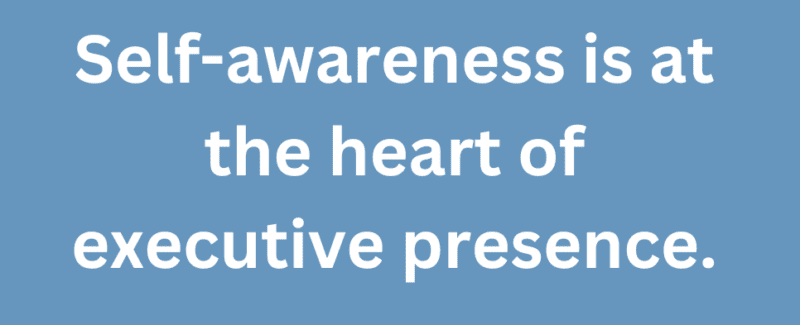
Executive Presence in 2025: Some New Trends.
In 2025, the definition of executive presence is evolving. It’s now incorporating aspects of authenticity, inclusiveness, and genuineness. What’s being emphasized less is a degree from a prestigious university or looking the part. Leaders are expected to be agile learners, inclusive visionaries, and tech-savvy innovators.
Here are some trends (both on-going and emerging) that are expected to shape executive presence in 2025:
-
- Authenticity: Leaders are defined by who they are, what they believe, and how they show up.
- Adaptability: Leaders need to be able to adapt to new challenges and opportunities.
- Collaboration: Leaders need to be able to collaborate with others.
- Emotional intelligence: Leaders are expected to use their natural strengths in emotional intelligence to redefine executive presence.
- Intergenerational mentorship: Intergenerational mentorship programs are becoming more popular to help close the gap in role models.
- Valuing experience: Experience is increasingly seen as a significant asset in leadership roles. Senior leaders and staff members should therefore be valued and tapped for their unique knowledge and insight, not categorically “aged-out.”
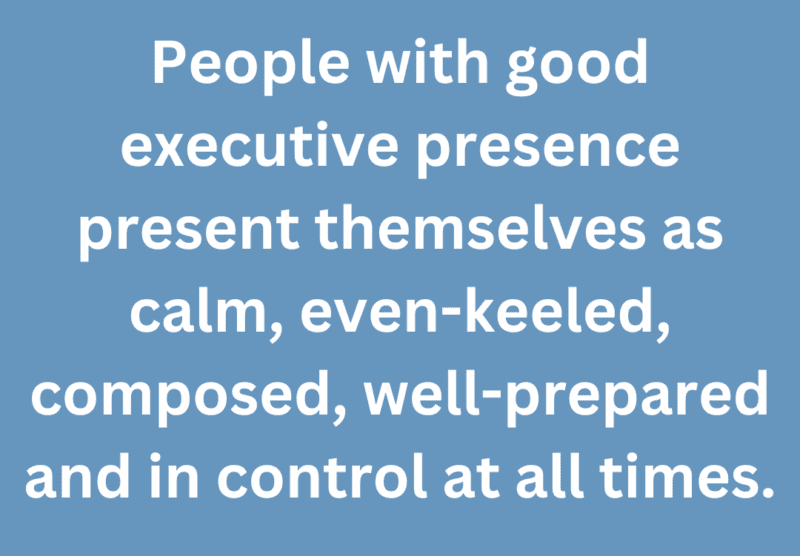
A Closing Thought . . .
Whether you want to chart a path to the C-suite or just want to be perceived as a competent leader, executive presence can be developed. Remember, executive presence has nothing to do with becoming someone you’re not. Instead, it’s about bringing out the best version of your true self and showing up as the leader people want you to be.
••••
We’re Here to Help You
Acquiring your own brand of executive presence can seem like a daunting challenge, but with guidance and practice you can get there. At Bay Area Executive Coach, we’re experts in helping leaders attain their full potential through mastery of emotional intelligence and the communication skills essential for success. Take a look at our executive coaching services. To learn how we can help you build executive presence, contact us today to have a conversation about your goals and aspirations.
To further assist you, we’ve prepared an Executive Presence Self-Assessment tool to help you pinpoint your strengths and weaknesses in this area. Click this link to take the Self-Assessment.
Resources
There are copious books, articles, and videos available covering every nuance of executive presence. Here are a few titles to get you started:
Books:
- Executive Presence: The Missing Link between Merit and Success by Sylvia Ann Hewlett, Rosalind Ashford, et al.
- The New Rules of Executive Presence by Sylvia Ann Hewlett (this is a recent article that’s a complement to the book noted above)
- Executive Presence for the Modern Leader: A Guide to Cultivating Success and Thriving in the Workplace by D.A. Benton
- Executive Presence, Second Edition: The Art of Commanding Respect Like a CEO by Harrison Monarth and McGraw Hill-Ascent Audio
- Composure: The Art of Executive Presence by Kate Purmal , Lee Epting , et al.
- How to Get ‘It’: The Power of Executive Presence for Women by Coni Judge
YouTube Videos:
- Executive Presence | Sylvia Ann Hewlett | Talks at Google
- Developing Your Executive Presence | Increase Your Impact As A Leader
- How to Build Executive Presence
- How to Develop Executive Presence and Command the Room With Confidence
- The Science Behind Executive Presence
Articles:
Download our The Authoritative Guide To Executive Presence eBook here.
Watch our videos on executive presence:
Featured photo is from ©Andrea Piacquadio via Pexels. Secondary photo is from ©Mikhail Nilov via Pexels.
